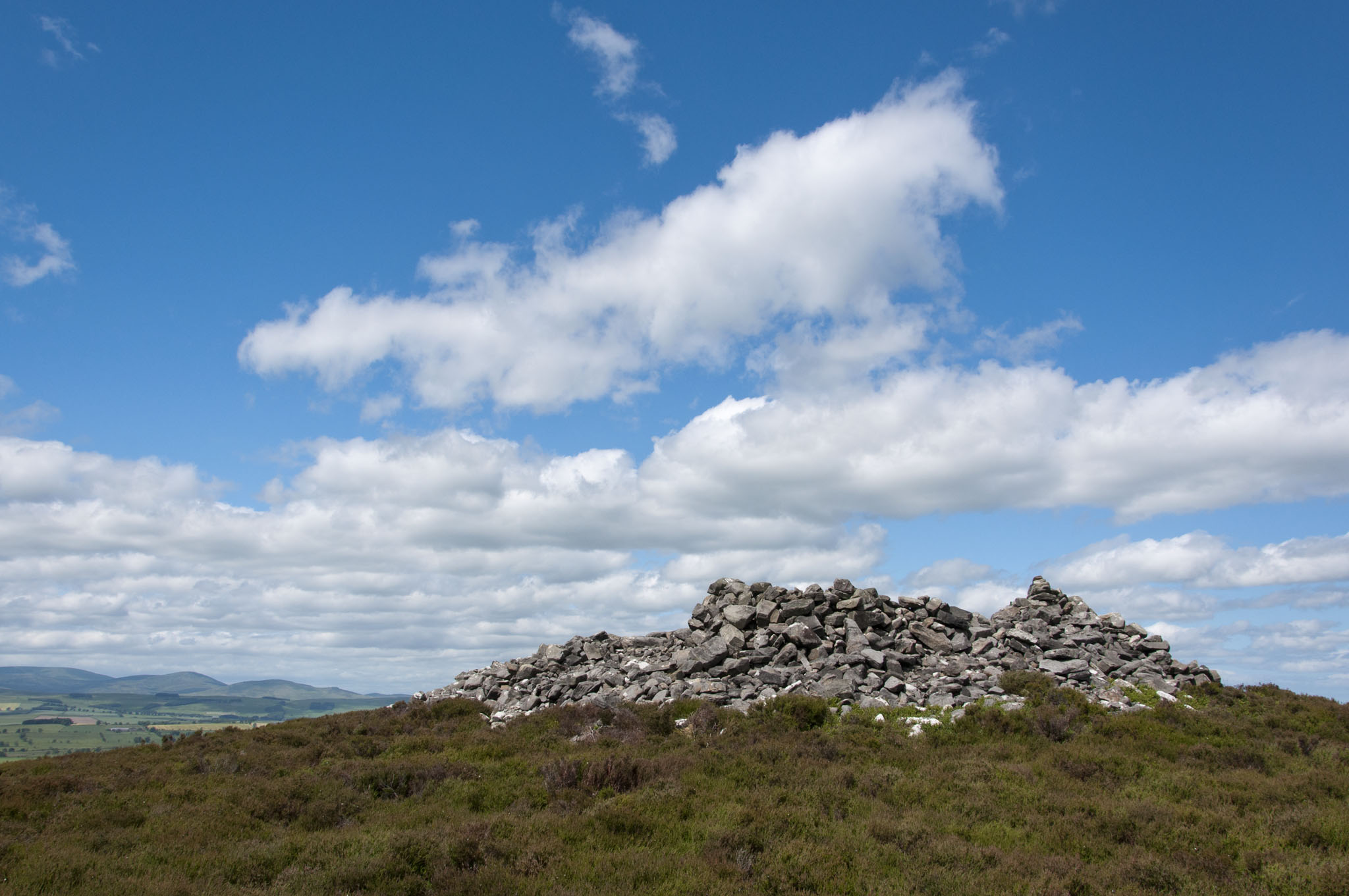Visiting Bronze Age cairns on Cartington Hill, Northumberland
A walk across heather moorland leads to the distinctive ridge of Cartington Hill. On the final climb the ground surface was broken by amazing exposures of bedrock. The surface of these exposures was marked by distinctive natural lines and textures, but there appear to be no cup and ring markings. The rock has weathered to a distinctive silver-grey colour, and bears minerals which sparkle in sunlight.
Above: Bedrock exposures on Cartington Hill (Photo: Aaron Watson, 2017)
Above: Distinctive natural textures on the Cartington Hill outcrops (Photo: Aaron Watson, 2017)
Just above these rock sheets was the first summit of the ridge at 302m above sea level. This has been monumentalised by a large burial cairn.
Above: The first, and most southerly of the cairns on Cartington Hill, with the Cheviot hills beyond (Photo: Aaron Watson, 2017)
Above: Looking south from the highest of the Cartington Hill funerary cairns. The Simonside Hills, visible on the skyline, are the setting for another group of Bronze Age monuments (Photo: Aaron Watson, 2017)
Above: Looking north from the highest cairn, with the second and third monuments visible along the ridge (Photo: Aaron Watson, 2017)
Above: Looking south from the third cairn along Cartington Hill, with the Simonised Hills beyond (Photo: Aaron Watson)





